
Coral reefs endangered by human use
HOMESTEAD, Fla. — More than 500,000 people visit Biscayne National Park every year for its boating, fishing, camping and glass bottom boat tours, but its biggest asset— its coral reef system—may be in danger.
Biscayne National Park is 95 percent water, and is home to 512 species of fish, and more than 50 species of coral. The coral reef system of the park is part of a 150-mile-long chain that extends down into the Florida Keys and the Caribbean and is home to more than one-third of Florida’s threatened and endangered species.
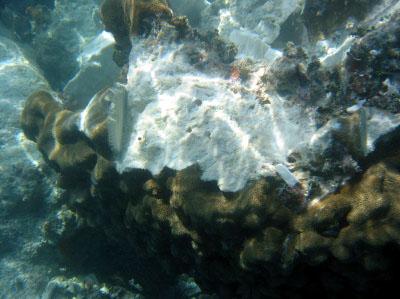 |
Coral reef damage can be extensive when a boat strikes the bottom (Photo courtesy of Daniel DiResta, University of Miami). |
Dr. Daniel DiResta, coordinator for the Marine and Atmospheric Science Program at the University of Miami, attributes a lot of the coral reef damage to population density and urban development, as well as over-fishing.
“When you develop coastal areas you change the run off patterns of nutrients and pollutants into the water and they get taken out to the coral reef by currents and title currents and things like that,” DiResta said.
According to DiResta, over-fishing is a big factor as well. Islanders and others who depend on fishing for food often take the smaller fish, known as grazers, which eat the algae that cover the coral. Without the grazers, the algae stay on the reef, harming its ecosystem.
Other causes for deterioration include changes in water temperature in response to global warming, changes in light intensity and water quality, and of course hurricanes.
“All kinds of things are contributing to it, you can’t put your finger on one thing. It may be different in different places,” DiResta said.
| White scars on coral are the damage caused by the bottom of a boat and its propeller (Photo courtesy of Daniel DiResta, University of Miami). |
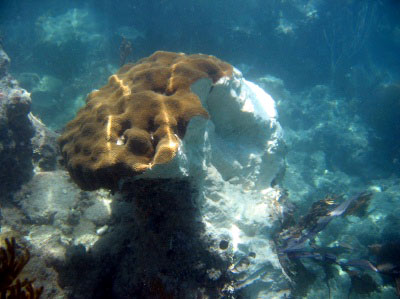 |
Biscayne National Park is home to about 4,000 patch reefs, which if not careful, can go unnoticed to the inexperienced boater.
“Oftentimes visitors without local knowledge will find themselves up on a reef platform and in among the coral reefs, and some of the coral reefs come up really close to the surface and boats will hit them and damage them,” DiResta said.
DiResta has been working to restore the park’s damaged coral reefs since 2002. Two or three times a semester he takes a group of students down to the park to help collect samples and check on the reef’s status.
DiResta and his students take the smaller pieces of coral that can be saved, and grow them in nursery in order to restore them. They epoxy the coral to a PVC stud, and embed an electronic tag into it so the coral can be monitored as it grows.
“The idea is that we grow these coral fragments, that would have died if we’d left them out on the reef, we grow them up to a size where we can then move them back out and restore reefs that have been damaged,” DiResta said.
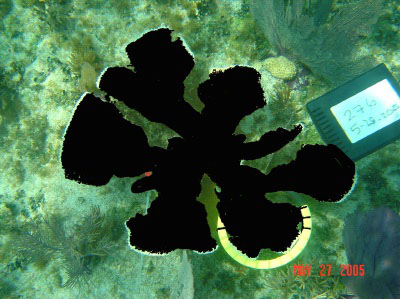 |
Coral growing in Biscayne National Park (Photo courtesy of Daniel DiResta, University of Miami). |
Gary Bremen, a ranger at Biscayne National Park, says that boater education is key to protecting the reefs.
“We have charts that we have printed up. They’re just cheap little newspaper things, they’re made up of advertising and what not. But through the South Florida National Parks Trust we were able to fund the printing of these so that people can find their way around out there,” Bremen said.
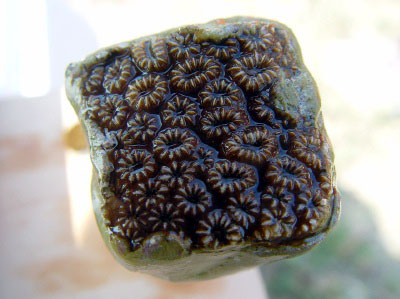 |
A coral fragment rescued from a boat grounding that was taken to a University of Miami marine science nursery (Photo courtesy of Daniel DiResta, University of Miami) |
“We have mooring buoys installed out on the reefs, in the most popular spots for snorkeling, diving and fishing, so that a boater doesn’t need to toss an anchor overboard which can cause damage to the reef. Instead they just tie up to a buoy that’s permanently affixed to the bottom,” he said.
The reefs are home to more than 200 species of tropical fish, and are unlike any other place in the world.
Other than the environmental aspects of the reefs, preserving them is essential to South Florida’s tourism economy.
“It’s the basis of the economy for the entire Keys area and South Florida in general; it’s a major tourist draw. You screw that up and you lose your tourist base. We don’t have anything else. We don’t have a big manufacturing industry here we’re pretty much strictly tourism and agriculture,” Bremen said.
According to DiResta, other reasons for preserving the reefs include possible cures for 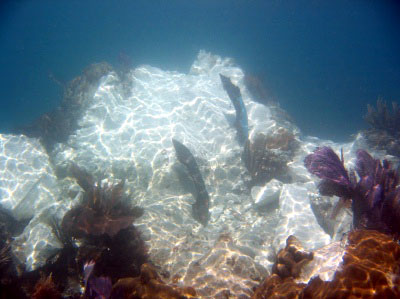 diseases.
diseases.
“Other people are doing really cool things with coral reef organisms, looking at natural products that are isolated through coral reefs, testing them to see if they have any affect as antibiotics or anti-cancer agents- kind of a ‘drugs from the sea’ thing,” DiResta said.
According to Bremen, this is of major importance as well.
“If you wipe these things out wholesale before you even get to appreciate what they’re about, what are you losing? Do you knock out the cure for cancer-the cure for AIDS? What do you do?” Bremen said.

Comments are Closed